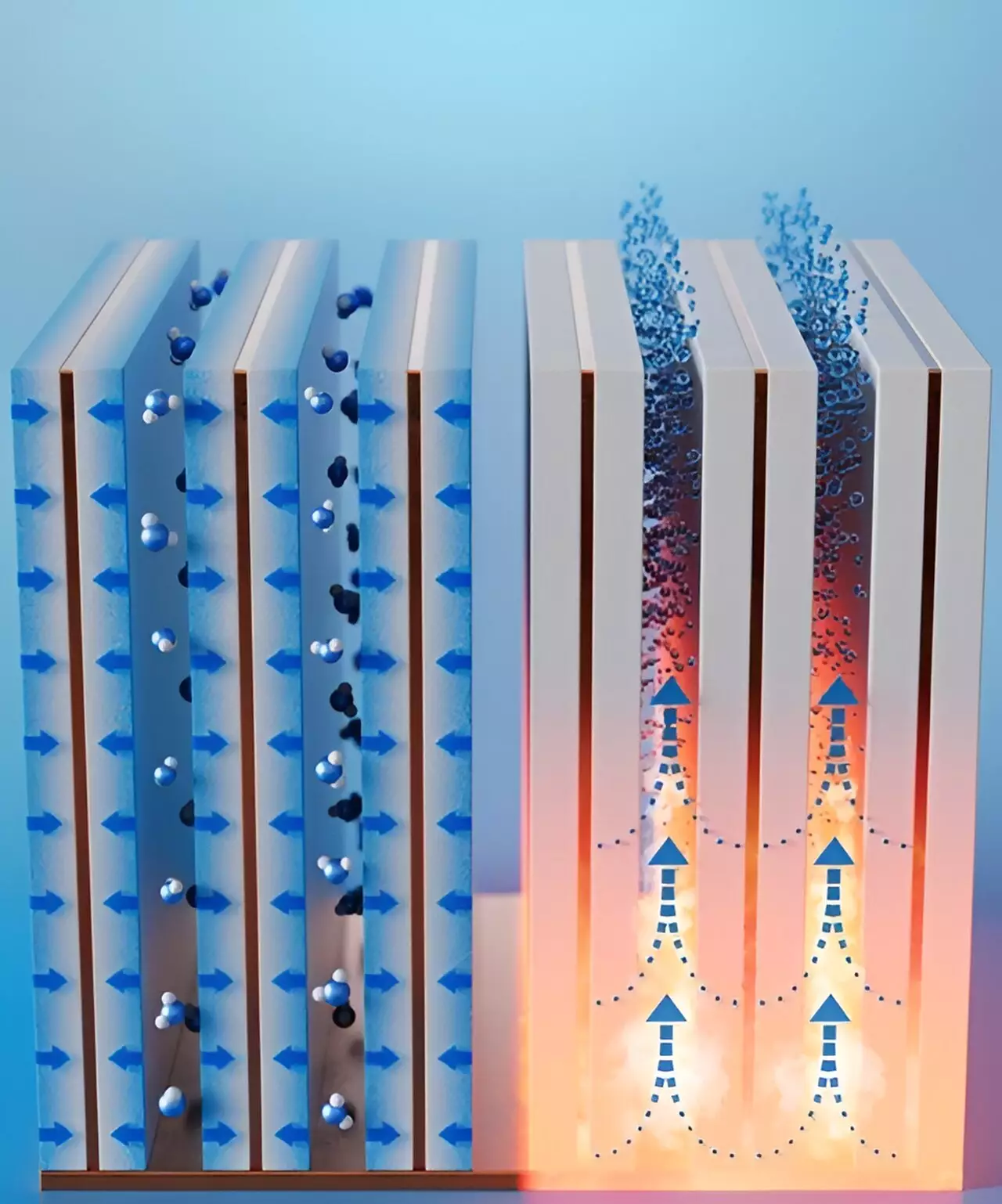Access to clean and safe water is a critical issue, especially in arid regions where water scarcity is a major concern. While Earth’s atmosphere holds a vast amount of water vapor, collecting this resource can be a challenging task. However, researchers have recently made significant advancements in developing compact devices that can harvest water from the air, offering a potential solution to the growing demand for water in dry locations.
Traditionally, systems for collecting water from the air have focused on trapping dew or fog, which are not always abundant in dry areas. To address this limitation, researchers have explored the use of special materials such as temperature-responsive hydrogels, metal-organic frameworks, and zeolites. These materials have the ability to pull moisture from the air and release it when heated, making them promising candidates for water harvesting applications.
In a recent study published in ACS Energy Letters, Xiangyu Li, Bachir El Fil, and their colleagues have introduced a new humidity harvester that could revolutionize water harvesting from the air. The researchers developed water-adsorbent “fins” coated with a commercially available zeolite, sandwiched between copper foams. This innovative design allows the fins to efficiently trap moisture from the air and release it when heated, resulting in the generation of potable water.
Unlike previous studies that focused solely on material development, the authors of this study emphasized the co-design of the adsorption bed with material properties to create thin and compact adsorbent fins. By placing 10 small adsorbent fins side by side on a copper base plate, spaced about 2 millimeters apart, the researchers were able to maximize water capture from air with 10% relative humidity. The fins saturated within an hour and released the trapped moisture at a base temperature of 363 Fahrenheit, demonstrating the efficiency of the prototype device.
Extrapolating the results of their study, the research team calculated that 1 liter of absorbent coating on the fins could produce up to 1.3 liters of potable water per day in air with 30% relative humidity. This volume is two to five times greater than that of previously developed devices, highlighting the significant improvement in water harvesting efficiency. The researchers believe that with further development, this technology could be integrated into existing infrastructures that produce waste heat, offering a cost-effective solution for generating potable water in arid regions.
The development of compact and efficient water harvesting devices, such as the prototype introduced in this study, represents a significant advancement in addressing water scarcity in arid regions. By leveraging innovative materials and design approaches, researchers are paving the way for a sustainable and cost-effective solution to meet the growing demand for clean water. With continued research and development, water harvesting technology has the potential to make a positive impact on water access and availability worldwide.


Leave a Reply